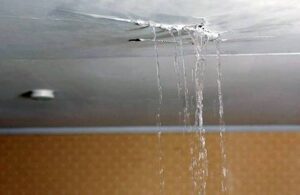When wind storms strike Northern California, your roof is your first and most important line of defense against wind damage to roof. High winds, flying debris, and heavy rain can lead to wind damage that compromises your roof’s ability to protect your home. Even a few missing shingles can allow moisture in, leading to leaks, mold, and costly repairs down the line.
At Cobex Construction Group, we’ve helped thousands of homeowners across Sacramento, Roseville, and Redding deal with storm damage of all types. This guide explains what wind damage to a roof looks like, how to prevent it, what the insurance claim process involves, and when it’s time to call a trusted roofing contractor.
What Causes Wind Damage to a Roof?
Wind damage occurs when strong winds, especially during severe storms, put stress on roofing materials, causing them to lift, loosen, or tear away. Wind speeds don’t need to be extreme to cause issues, gusts as low as 50 mph can compromise older roofs or poorly installed shingles. Damaging winds tend to hit vulnerable areas first, like the roof edge, corners, and ridges.
One of the most common results of a windstorm is missing shingles. Once a few shingles are pulled off, wind can easily get underneath the remaining roof shingles and rip off entire sections of your roofing system. This exposes your roof deck and underlayment to the elements, opening the door to water intrusion and further damage.
Common Signs of Wind Damage

Wind damage to your roof isn’t always obvious. Sometimes, homeowners don’t notice there’s a problem until leaks begin to form. To catch problems early, keep an eye out for these visible signs after a windstorm:
1. Missing Shingles
Shingles that have been blown off completely are a clear sign of storm damage. You might see bare spots on your roof or find shingles scattered across your yard.
2. Curled or Loose Shingles
Shingles may curl at the edges or lift when wind pressure separates them from the adhesive strip. Loose shingles are at risk of blowing away with the next gust.
3. Cracked or Creased Shingles
These often appear along the middle of asphalt shingles and are typically caused by repeated flapping in the wind.
4. Damaged Flashing
Wind can loosen or bend the metal flashing around chimneys, skylights, and roof valleys, creating gaps where rain and debris can enter.
5. Debris on the Roof
Tree limbs, broken glass, and pieces of siding or lawn furniture on the roof are a strong indicator that your roofing materials may have sustained impact or puncture damage.
6. Leaks or Water Spots
Water stains on your ceilings or walls after a storm are a red flag that wind-driven rain has gotten through the roofing system. Standing water or wet insulation in the attic are signs of immediate concern.
Tip: Even if you don’t see visible damage, have a professional roofing contractor perform a roof inspection after any strong storm. Wind damage often requires a trained eye to assess accurately.
Why Some Roofs Are More Vulnerable to Wind Damage

There are several factors that affect how well your roof will stand up to high winds:
Age of Roof
Older roofs are naturally more susceptible to wind damage. As roofing materials age, they lose flexibility, adhesive strength, and resistance to impact.
Installation Quality
Many contractors take shortcuts during installation, leaving you with a roof that looks good but can’t withstand strong winds. Improper nailing patterns, poor sealing, and weak flashing all increase the risk of wind damage.
Type of Roofing Materials
Asphalt shingles are widely used because they’re cost-effective and attractive, but not all shingles are rated for high wind speeds. Investing in wind-rated roofing materials and impact-resistant shingles can help protect your home.
Roof Design
Roofs with large overhangs, complex slopes, or multiple ridges tend to catch more wind and experience more uplift pressure. The roof edge and corners are especially prone to stress in high wind conditions.
Gutters and Drainage
Clogged or damaged gutters can cause standing water to collect, especially during rainstorms that accompany wind. This adds weight and moisture to vulnerable roof areas, leading to water damage and leaks.
What to Do After a Windstorm
If your house has been hit by a windstorm, acting fast can help you avoid bigger problems and reduce repair costs.
Step 1: Assess Your Property
Walk around your home and look for shingles on the ground, dented gutters, broken glass, or damage to siding and windows. Pay attention to fallen tree branches or other debris that may have struck the roof.
Step 2: Check the Interior
Look inside your attic and check ceilings for signs of water damage like water spots, discoloration, or damp insulation. The attic is often where early signs of roof leaks appear.
Step 3: Schedule a Roof Inspection
A professional roofing inspection can reveal curled shingles, hidden damage, and potential weak points that could lead to further damage in the next storm.
Need help fast? Cobex offers complimentary roof inspections for homeowners throughout Northern California. Our team responds quickly after storms to assess damage and recommend next steps.
Step 4: Document the Damage
Take photos of any visible damage, both inside and out. This will be useful if you need to file an insurance claim.
Step 5: File a Claim with Your Homeowners Insurance
Wind damage is typically covered under homeowners insurance. Your policy may also cover storm damage, hail damage, and even some water-related issues if they’re caused by a wind event.
Navigating the Insurance Claim Process

Filing an insurance claim for roof damage can be confusing, especially if you’ve never done it before. Here’s what to know:
What’s Covered
Most homeowners insurance policies include coverage for wind damage, hail, and storm-related issues. However, coverage may vary depending on your deductible, policy type, and whether your roof has been properly maintained.
ACV vs. RCV
If you have an Actual Cash Value (ACV) policy, your insurance will pay based on the current value of your roof minus depreciation. A Replacement Cost Value (RCV) policy will cover the full cost of replacing the damaged roof, minus your deductible.
How to File a Claim
Once you’ve documented the damage, contact your insurance company. Then, work with a roofing contractor who has experience supporting homeowners through the claim process. At Cobex, we help you prepare estimates, provide photos, and communicate directly with adjusters.
Preventing Future Wind Damage
While no roof is completely wind-proof, there are smart steps you can take to protect your roof and reduce your chances of experiencing significant damage:
Schedule Regular Roof Inspections
A proactive roof inspection each year, especially before and after storm season, helps catch minor issues before they turn into costly repairs.
Reinforce the Roof Edge
Since the roof edge is highly vulnerable to uplift, reinforcing this area with stronger materials and additional fasteners can add extra protection.
Invest in Wind-Resistant Roofing Materials
If you’re replacing your roof, talk to your roofing company about shingles rated for higher wind speeds. Cobex installs asphalt shingles and other roofing materials built to perform in California’s unique weather conditions.
Keep Trees Trimmed
Low-hanging branches can scratch or puncture your roofing system during strong storms. Trim trees and remove dead limbs to prevent impact damage from debris.
Secure Gutters and Downspouts
Gutters play a key role in preventing water damage during storms. Make sure your gutters are clean, attached properly, and directing water away from your property.
Anchor Lawn Furniture and Exterior Items
Lawn furniture, grills, and other outdoor items can become dangerous projectiles in high winds. Secure or store them ahead of storms.
When to Call a Professional Roofing Contractor

If your roof has suffered wind damage, do not wait to get it checked out. Even a small area of missing shingles can lead to bigger problems if left unaddressed. A professional roofing contractor will:
- Perform a detailed inspection
- Identify visible damage and hidden weak points
- Provide documentation for your insurance company
- Recommend whether you need roof repair or full replacement
- Ensure repairs are code-compliant and warranty-backed
Cobex Construction Group is proud to be Northern California’s trusted roofing company. We understand the local climate, the materials that perform best here, and how to help homeowners protect their property long-term.
FAQs About Wind Damage to Roofs
Can wind really damage my roof without a major storm?
Yes. Even without a hurricane or tornado, strong winds or repeated gusts can loosen shingles, bend flashing, or cause moisture to seep in through vulnerable points.
How much wind does it take to cause damage?
Wind speeds as low as 50 mph can lift shingles or tear away flashing. Older roofs or those with prior damage are even more vulnerable.
Will homeowners insurance cover the cost of repairs?
In most cases, yes. Wind damage is a covered peril under standard homeowners insurance policies. Be sure to file a claim promptly and document all visible damage.
Should I repair or replace my roof after wind damage?
It depends on the extent of the damage. If the damage is localized, roof repair may be sufficient. If the damage is widespread or your roof is older, replacement may be more cost-effective and provide longer-lasting protection.
What if I don’t see any damage?
Wind damage isn’t always obvious. Hidden leaks, loose shingles, or bent flashing may only become problems weeks later. A roof inspection from a professional roofing company like Cobex can give you peace of mind.
Protect Your Roof With Help From Cobex
Wind damage can happen quickly and lead to significant long-term problems. Whether you’re dealing with missing shingles, leaks, or just want to stay ahead of the next storm, Cobex Construction Group is here to help.
As a licensed, insured, and locally owned roofing contractor, we take pride in offering honest inspections, high-quality roofing materials, and repairs that stand up to California’s toughest weather. From the initial inspection to the final nail, we’re with you every step of the way.





























